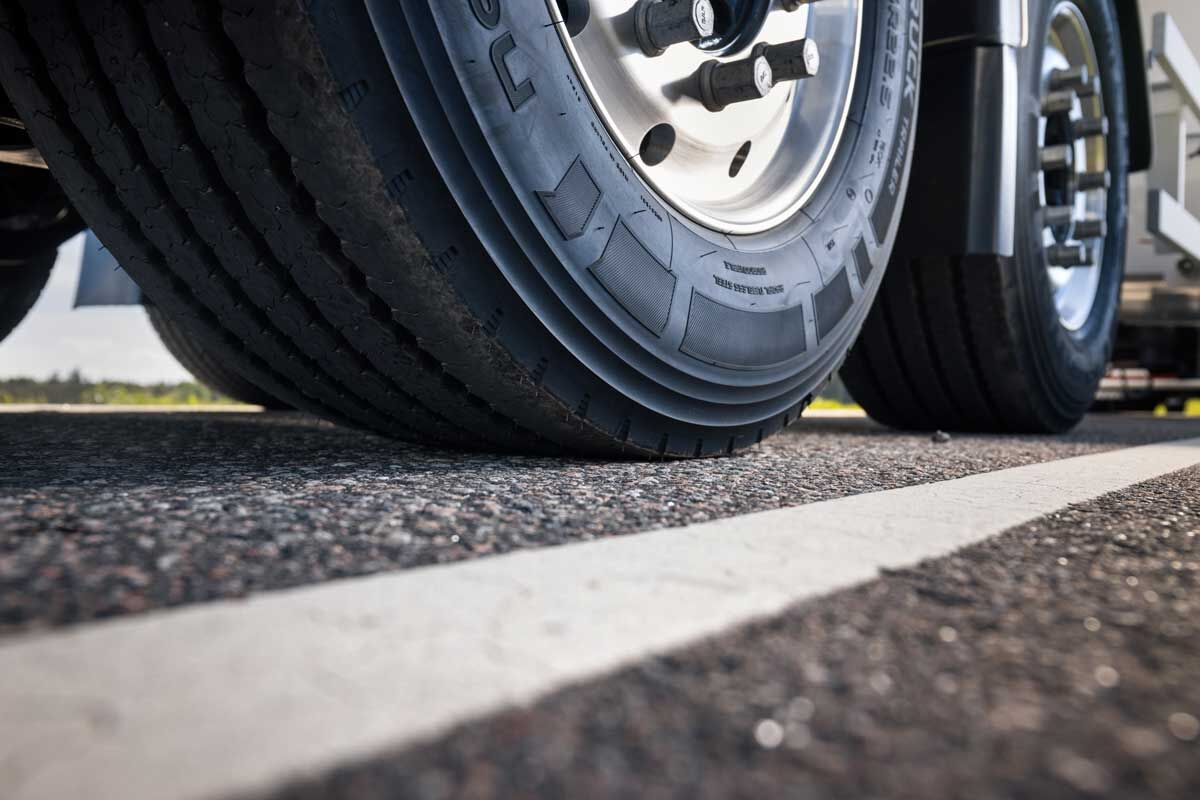Tire information
Tire pressure in winter: Adjust inflation pressures when the temperatures drop
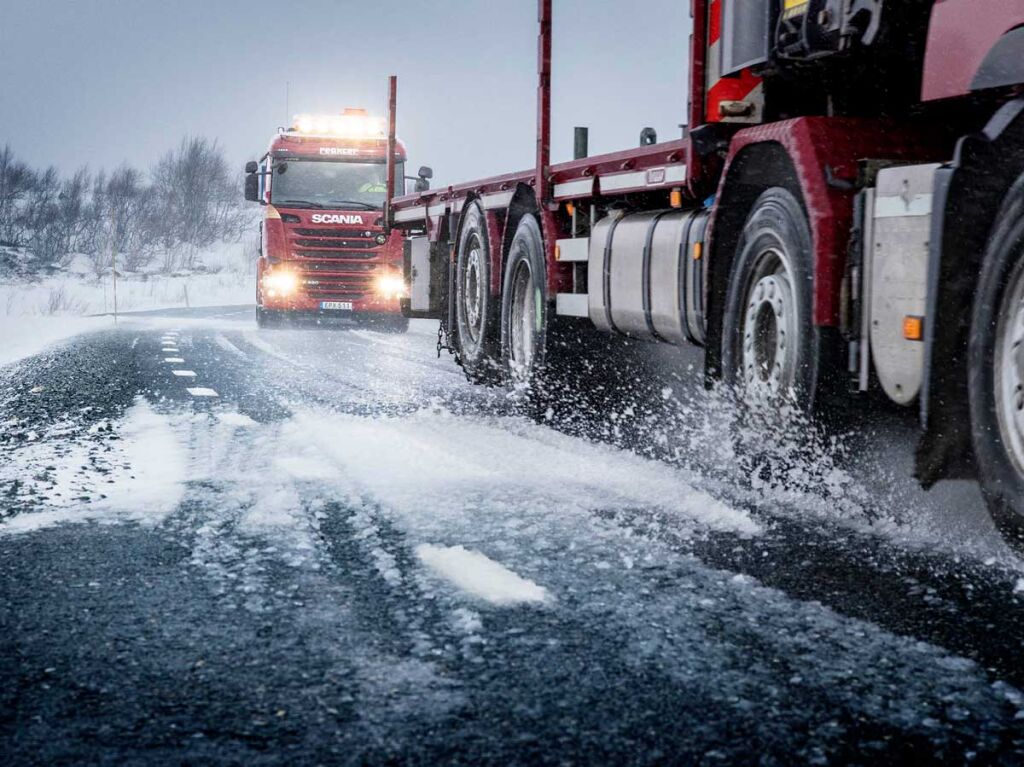
Because of our home in the Nordics where winters are cold and pose additional challenges to tires, Nokian Tyres knows the effects of winter conditions and cold temperatures on commercial tires. In addition to using dedicated winter tires during the colder months, it is necessary to adjust tire pressures according to the weather. This ensures that you are always prepared for whatever the winter throws your way.
Regardless of the conditions, it is crucial to maintain the correct pressures in your heavy tires. This is particularly important for industrial tires with high inflation pressures that can rise over 10 bar (145 psi) in some common applications. Pressures this high can cause explosions equivalent to light explosives.
Tire pressure drops on winter
When operating your heavy machinery in winter conditions, keep in mind that the tires’ inflation pressures drop with the temperature outside. To account for this change in outside temperatures, inflate your tires slightly above the recommended pressure. Otherwise the tires are underinflated and do not perform at their optimal level.
Use the diagram below to check the appropriate inflation pressure for different temperatures.
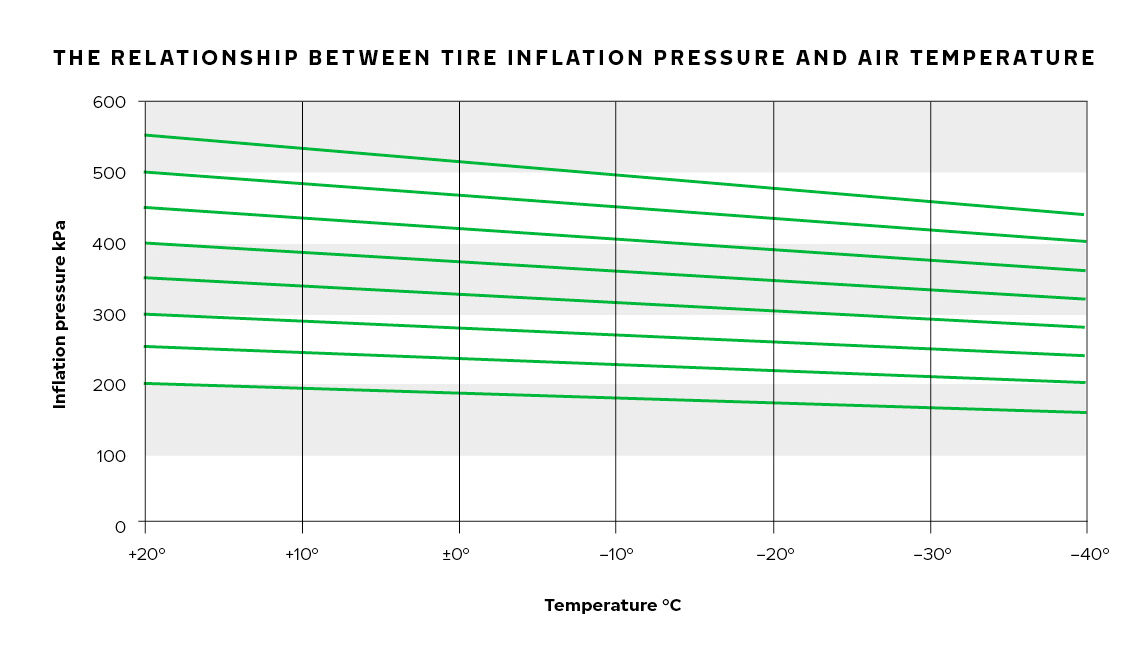
For reference, the inflation pressure for a forestry tire rises approximately 0.17 bar (2.4 psi) for every 10 degrees Celsius (50° F), while the inflation pressure in harbor tires, rises about 0.35 bar (5 psi).
Check tire pressures regularly at cold temperatures
Check tire inflation at regular intervals during the winter to account for shifts in temperature. Operating a heavy vehicle with excessive tire pressure can lead to damage, premature or uneven tire wear, or cause a blowout.
Similarly, too-low inflation pressures can have undesired consequences for your tires as well. For instance, driving against hard and uneven surfaces with an underinflated tire can cause damage due to increased friction and reduced shock absorption qualities. Additionally, insufficient tire pressure can lead to ply separations, carcass fatigue, belt edge separation, and overall structural damage.
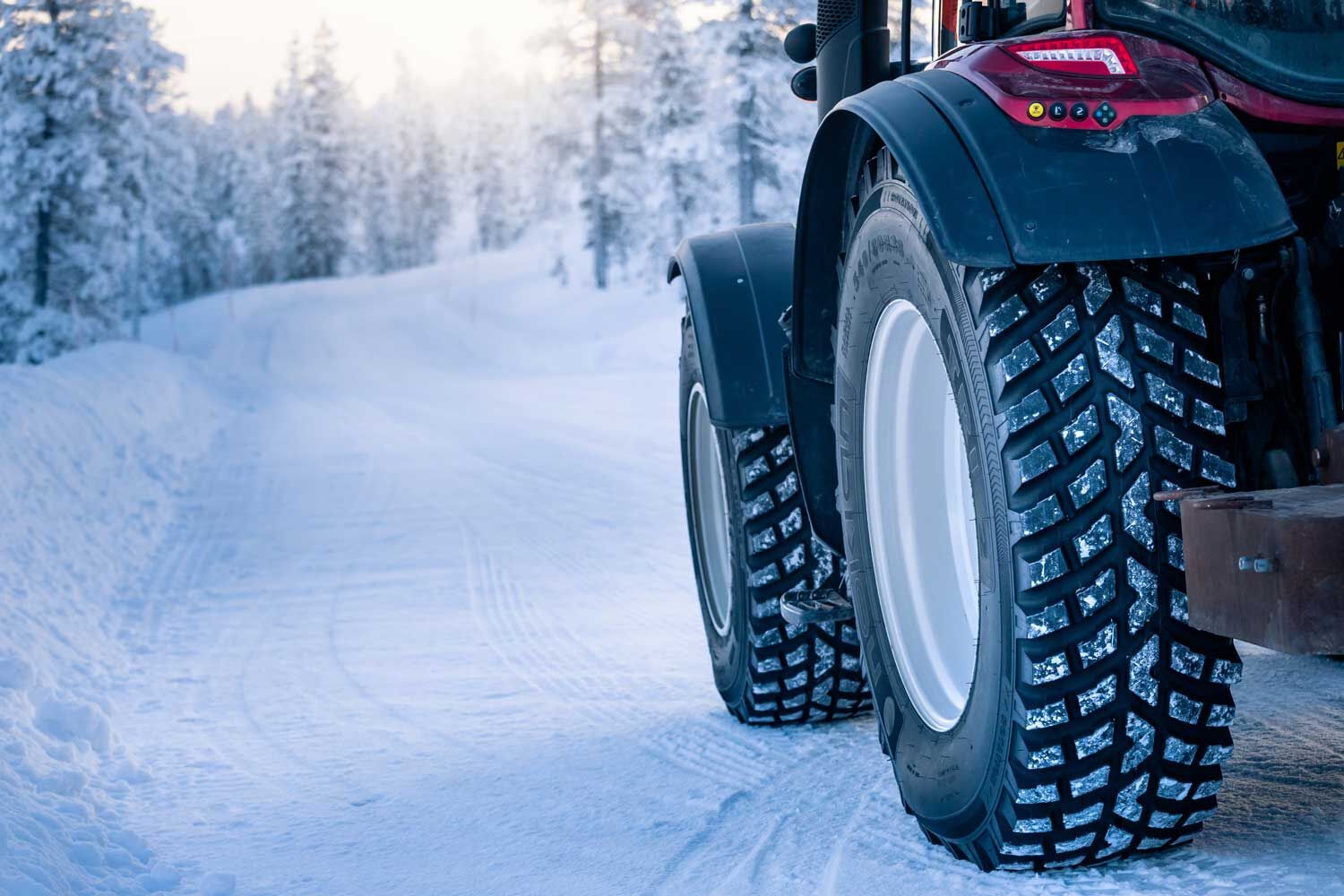
If possible, check and adjust tire pressure indoors and before operating the vehicle. Heavy tires, in particular, heat up even after a short time in use, which may lead to inaccurate readings when checking the current inflation pressure of your tires. Wait for the tires to cool down or check the inflation pressure first thing before operating the vehicle.
What else influences tire pressure?
Winter temperatures are not the only thing you should take into account when operating in cold temperatures and winter conditions. The two other variables to keep in mind are speed and load, both of which can fluctuate significantly throughout the workday. As a result, you may have to adjust the inflation pressure of your tires many times during the working day.
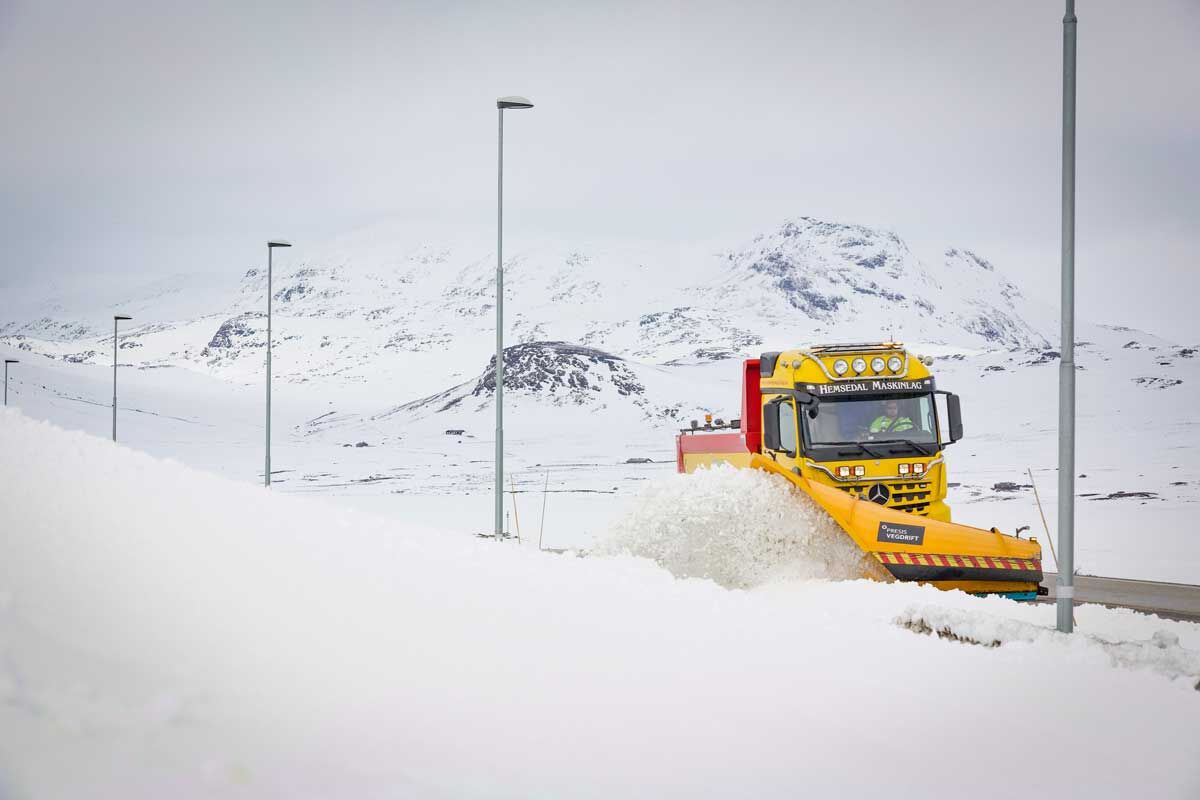
The Nokian Heavy Tyres technical manual includes a chart for speed, pressure and load-bearing capacity for each heavy tire. Based on the technical manual, you can check how changes in speed, load, and tire pressure influence each other.
Here is an example of how to find the suitable inflation pressure based on load and the maximum speed for a 650/65R26.5 174 D -sized tire.
Please remember that it is the driver’s responsibility to ensure their tires are safe and suitable for their vehicle and to follow the vehicle’s manufacturer´s guidelines for proper use and maintenance. Consult your closest Nokian Tyres dealer or your vehicle’s manufacturer for specific advice.

